Euphorbia radians, Sun Spurge
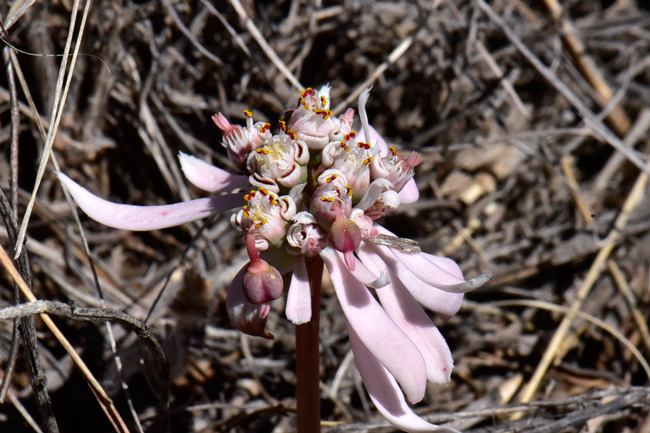
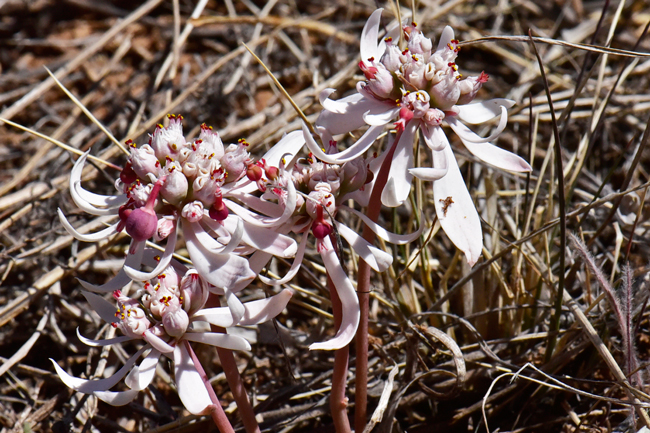
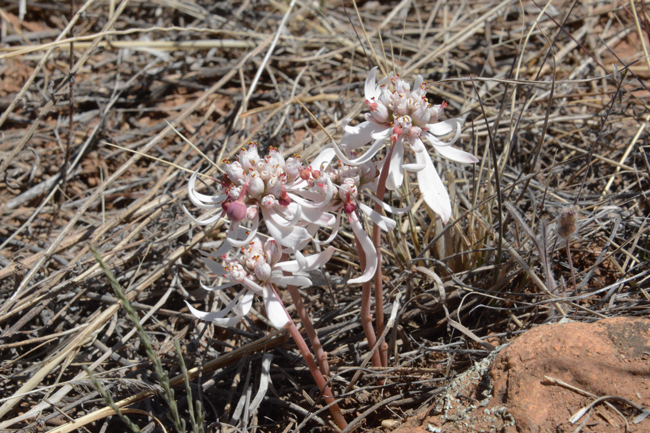
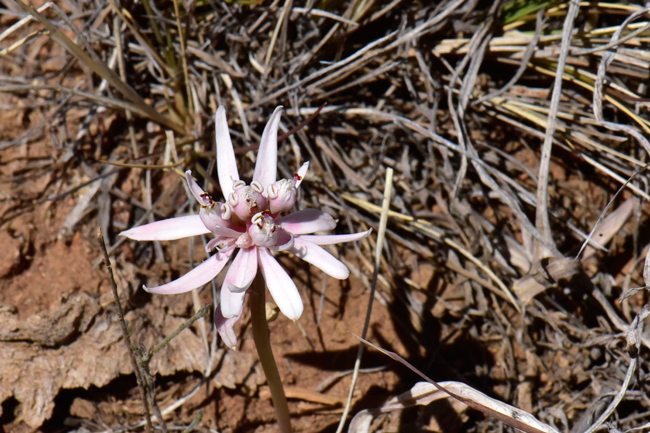
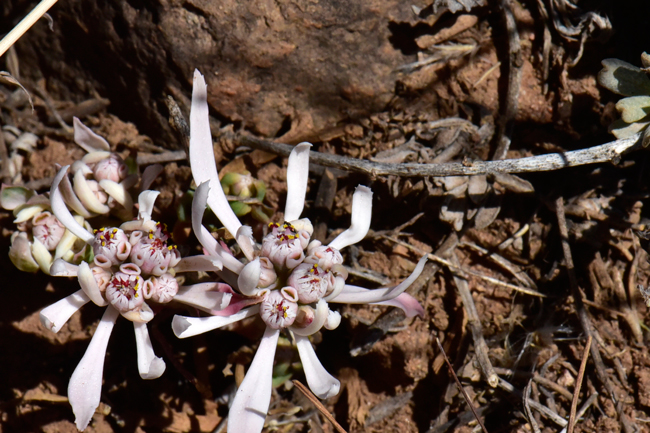
Scientific Name: Euphorbia radians
Common Name: Sun Spurge
Also Called: Spanish (Chichimecapatli, Yamancapatli)
Family: Euphorbiaceae, Spurge or Euphorbia Family
Synonyms: (Poinsettia radians)
Status: Native
Duration: Perennial from a thickened taproot.
Size: 8 to 12 inches or so (5–20 (–30) cm).
Growth Form: Forb/herb; stems erect, few to several, mostly glabrous; thickened taproot.
Leaves: Light green; alternate, leaves glabrous or strigose; leaves sessile or with short petiole, shape variable from linear-lanceolate to ovate or broadly elliptical; margins with a few glandular teeth, strigillose, flat to revolute.
Flower Color: Variable, white or pink or reddish tinged; flowers appear before leaves develop, flowers monecious, "flowers" modified into a cyathium subtended by colored floral leaves (modified bracts) on terminal stems, the inflorescence bearing only reduced bracteal leaves; fruit is a 3-lobed capsule.
Flowering Season: Spring through Summer.
Elevation: 2,300 to 8,000 feet - (700–2500 m).
Habitat Preferences: Desert transitions areas, desert grassland and desert scrub communities, pinyon-juniper woodlands, oak savannas.
Recorded Range: Euphorbia radians is found in the southwestern United States in AZ, NM and TX and in the deserts of Sonoran and Chihuahuan, southward to Oaxaca, Mexico.
North America & US County Distribution Map for Euphorbia radians.
U.S. Weed Information: No information available.
Invasive/Noxious Weed Information: No information available.
Wetland Indicator: No information available.
Threatened/Endangered Information: No information available.
In the Southwestern United States: Arizona has 21 species of genus Euphorbia, California has 25 species, Nevada has 6 species, New Mexico has 22 species, Texas has 31 species, Utah has 12 species. All data is approximate and subject to taxonomic changes.
Comments: The genus Euphorbia is large with more than 2,000 species worldwide. In the southwest there are about 30 species or so. As with many species of Euphorbia, this species releases a milky sap of white latex which is toxic.
In Southwest Desert Flora also see Euphorbia eriantha, Beetle Spurge, Euphorbia heterophylla and Mexican Fireplant, Euphorbia incisa.
No information available.

